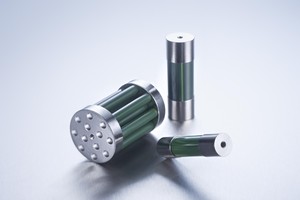
Wirewound resistors refer to the electrical passive components that are limiting current with a wire material that features high resistivity. Their resistive elements exist out of the metallic wire insulated that has been winded around the non-conductive material core.The resistive elements are existing out of metal wire that is insulated and winded around a non-conductive core material. These resistors are usually made up of copper-nickel-manganese which is called as “Manganin” or nickel-chromium (Nichrome) materials. Such wire wound resistors had been an old type of resistor. However, these have been still manufactured today. They could be produced highly accurate and got a very excellent properties of high power rating and low resistance value.
The wire wound resistor construction depends on different factors involving the material manufacturing and choice utilized varying on how resistors were used in a circuit. The value of the resistance depends on the wire resistivity, its length and its cross section. To obtain a high measurement in tolerance, the resistance value is measured to determine the exact wire length cut. To make the resistance high, the diameter of the wire should be small enough while its length must be long.
Wirewound resistors have been giving capacitance and inductance that are affecting the current flow in an alternative current circuit. Due to its design principle, the wire wound resistor obtained the poorest frequency properties. It has been compared to other kinds of wire wound resistors. There are different methods of winding application. However, they still vary on the application of the resistor. Through a DC current, only minor problems are achieved when winding than an AC current because of parasitic capacity and self induction. In order to reduce the effects, there have been various kinds of winding that exist and these are the Ayrton-Perry winding, winding on the flat former and bifilar winding.
 Types of winding are usually associated measurement devices as well as decade banks. However, the downside is more on difficult process of manufacturing. There are many different kinds of wire wound resistors which are roughly classified into power and precision types. They were generally modified for many different selections of applications. These applications include temperature sensors, current and potentiometers.
Types of winding are usually associated measurement devices as well as decade banks. However, the downside is more on difficult process of manufacturing. There are many different kinds of wire wound resistors which are roughly classified into power and precision types. They were generally modified for many different selections of applications. These applications include temperature sensors, current and potentiometers.
Wire resistors are generally found in circuit breakers. At times, they also function as the fuse. To achieve a fusible resistor, the manufacturer need to connect smaller springs. These springs must be integrated into the resistors’ one end. Whenever the current and the heat through a resistor gets high enough, the solders will melt while springs are popping up when the circuit opened.
No comments:
Post a Comment